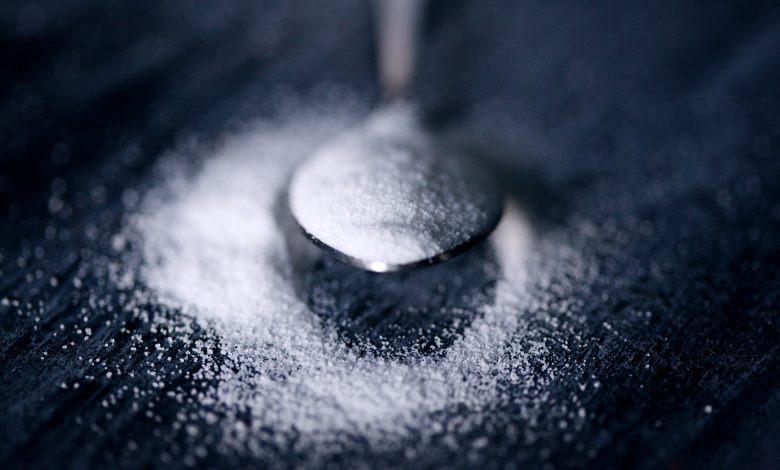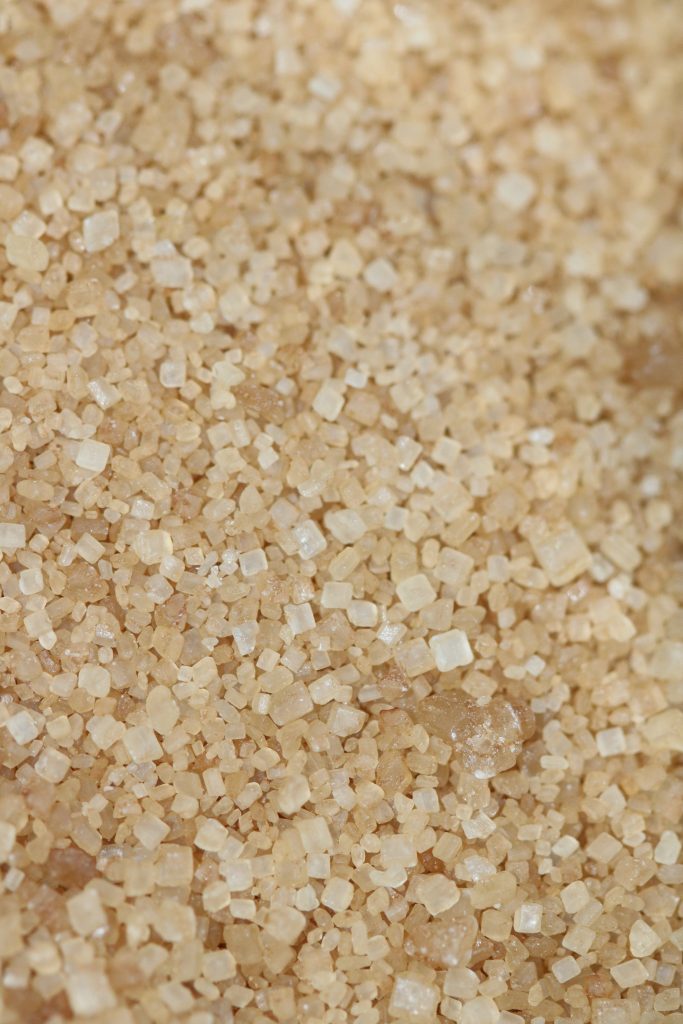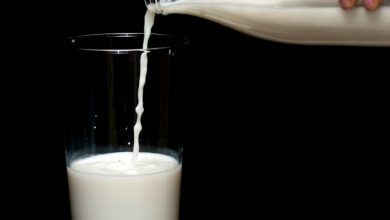
Getting the No Sugar Diet Right, The Healthy Way: Tips & Tricks
The body craves sugar and it’s only human to treat it to it. Our body knows that sugar gives it the rush of energy every time it feels fatigued, or it wants to indulge the sweet tooth. The taste of sugar on the palate brings in a rush of happiness and energy, also known as calories.
Sugar as a food group has no nutrient value. Of course, it supplies us with calories, but that’s about it. Calories are something that you can derive from food groups that offer you some other nutritional benefits as well. The natural sugar in fruits gives you the burst of energy you need, while also supplying you with some much-needed proteins and vitamins. By cutting sugar from your diet, you can expect higher energy levels and even better moods, which happens when your blood sugar levels are balanced. Once you start cutting sugar from your diet, gradually, you will find yourself craving sugar lesser by the day.
But yet again, you might wonder if it is really essential to cut sugar out from the diet. After all, it is pretty intrinsic to our daily life. A change at this point might seem not only difficult, but also a lot of work. In this article, we tell you all about:
- Why it is important to cut back on sugar in your diet
- What is a no sugar diet
- How it works
- The right food to support your no sugar diet
- Tips and tricks to master the no sugar diet

Why cut out sugar?
Foods with natural sugars, like fruits, vegetables, grains, and dairy, are perfectly fine to be included in your daily diet. The reason is the slow speed at which they are digested, which keeps supplying the body with energy steadily. However, when you start consuming too much sugar, it is not burned enough, and your body starts storing it. This generally ends in diabetes or obesity.
Simple sugars such as galactose, glucose, and fructose are absorbed by the small intestine and are pumped directly into the bloodstream. Once sugar is detected in the bloodstream, the pancreas starts releasing insulin, which lets the cells take in the glucose and turn them into ATP, the primary energy source of everything we do.
This means simple sugars, as opposed to complex carbs, are digested very quickly. This spikes blood sugar levels in a short duration and promotes a strong insulin response. So while sugar pumps energy into your body and is not a bad food to have in your diet, too much of it generally causes a world of problems.
How do you know how much sugar is too much sugar? As mentioned earlier, foods occurring naturally contain natural sugars that are okay for daily consumption. But the moment you start adding artificial sugar and sweeteners to your diets, the problem of added sugar creeps in.
You find added sugar mostly in soft drinks, flavored yogurts, cereals, candies, cakes, processed foods, cookies, and fruit drinks with added flavors. You can also find added sugars in food items like soups, ketchup, bread, and cured meats. Manufacturers, in order to increase the shelf life of these foods, add sugar, which increases the overall sugar content of these items.
Consumption of processed food has increased the average sugar intake of people in general. According to a study conducted by the National Cancer Institute, an average adult man ingests an average of 24 tsp of sugar per day, which amounts to 384 calories.
Increased sugar level does not only impact your blood sugar and obesity levels but also harms your cardiovascular health. People who derive 17-21% of their calories from sugar showed a 38% higher chance of dying from heart disease. Hence, the higher the intake of added sugar in the diet, the higher the risk of heart disease.
Moreover, the liver metabolizes sugar in a way that it takes the carbs and turns it into fat. Over time, this leads to a condition known as the fatty liver, which could lead to diabetes, as well as increase the risk of heart disease.
Increased sugar consumption can also lead to higher levels of chronic inflammation and higher blood pressure levels. Both of these, again, are leading causes of heart diseases in today’s date.
In a nutshell, increased sugar intake can lead to:
- High blood pressure
- Diabetes
- Weight gain
- Fatty liver
- Chronic inflammation
- Higher risk of heart attack and stroke
If you think cutting out on sugar altogether from your diet is going to be difficult, then you can try to go for a maximum limit of 9 tsp every day (~36 grams).

What’s the best way to cut sugar out?
If you are on a high sugar diet currently, it is recommended that you do not cut out your sugar consumption all of a sudden. This can send the body into shock and you might suffer side effects such as:
- Craving for sugary food
- Nausea
- Headache
- Fatigue
- Stomach cramps
- Muscle aches
- Anxiety
- Bloating
In order to avoid this, try to start with a low sugar diet before you get to the no sugar diet. Here’s the sugar lineup starting from the worst sugar to the least sugar. When you start on your low sugar diet, start eliminating consumption from the very top. This will slowly bring you food items with low sugar content, which will keep your energy levels up without spiking your blood sugar levels.
1. Foods with added sugar – Candies, pastries, sweetened foods and drinks (soda, sports drinks)
2. Refined grains – Pasta, crackers, white rice, white bread, baked goods
3. Starches and whole grains – Quinoa, brown rice, oats, whole grain bread
4. Fruits – Apples, pineapples, bananas, pears, peaches, berries
5. Starchy vegetables – Pumpkin, squash, beetroot, carrots, potatoes
6. Green vegetables – Spinach, lettuce, cabbage, broccoli, asparagus
The easiest way to cut sugar from your diet is by substituting the high sugar foods with lower ones. This ensures you do not starve your body or start craving high-calorie foods. Here’s how you do it. If you like to eat a white bread, egg, and mayo sandwich along with coffee with cream and sugar for breakfast, try to switch to a whole grain bread sandwich and skip the mayo. Also, try to cut the quantity of sugar in your coffee and skip the cream. Keep cutting back on the sugar in your coffee till you are comfortable drinking a cup without it at all.
If you are already on the track to eating healthy, start with finding out the food with the highest levels of sugar currently in your diet and start replacing it with the next level. For example, you can switch from white rice to brown rice, and from potatoes to spinach.
A quick tip: Ensure that you do not skip a level in the lineup. If you are still eating refined grains, try not to jump to fruits and vegetables all of sudden by skipping the starches and whole grains diet. Refined grains contain complex carbs that are necessary to maintain and restore healthy gut bacteria.

What is a no sugar diet and how does it work?
Since sugar has little-to-no nutrient value and is only necessary to provide the body with energy, its intake should be limited to the amount of energy we require on a daily basis. Any more sugar than required is nothing but calorie that is stored in the body and then turned to fat. A no sugar diet can prove helpful in avoiding weight gain from too much sugar intake.
The trick to following a no-sugar diet effectively is by knowing which foods contain what kind of sugar. Reading labels on packaged foods is also a great way of keeping a tab on your sugar intake. Here are the names of certain sugars that you should look out for and avoid on your no sugar diet journey.
- Sugar
- Brown sugar
- Syrup
- Corn syrup
- High fructose corn syrup
- Corn sugar
- Fructose
- Sucrose
- Galactose
- Glucose
- Raw sugar
- Honey
- Turbinado sugar
Even though honey might seem like a healthy food option, as it is obtained naturally from bees, the fact is it still contains sugar. While it is still okay to use it in your diet, still honey does not add any nutritive value to it and can be skipped.
By slowly choosing food with lesser sugar content in it, you start reducing your calorie intake. You can start with the aim of limiting it to 100-200 calories per day. The idea is to limit the calorie intake to 10% of what you are eating currently. Start reading labels and switching high-calorie sugar with low-calorie sugars and complex carbs. This will ensure your body receives a steady supply of energy without cutting off sugar completely.
Avoid:
- Foods with additives and sugar (baked goods, chips, etc.)
- Sugar, honey, molasses
- Sweetened drinks (sodas, fruit juices, etc.)
Adopt:
- Naturally occurring sugar (fruits, vegetables, whole grains)
- Unsweetened drinks (herbal teas, coffee without cream, and sugar)
With less sugar in your body, you use up whatever sugar you are ingesting in the form of energy. The less sugar stored, the less you need to worry about it getting converted and stored as fat, which will take ages to get rid of. As such, a no sugar diet is one of the best ways to lose weight in a healthy and long-term manner.

Getting started on the no sugar diet: 7 tips and tricks
Now that you know the various benefits of the no sugar diet, it’s time to find out how to ace it. While the no sugar diet might not be a particularly difficult one from the quantity you ingest, it could be difficult considering the food you replace your regular diet with. Therefore, it is recommended that you make your no sugar diet transition gradually. Follow the tips given below to make this happen and start reaping its beneficial results:
Start slowly
Getting off sugar suddenly is not an easy feat. Your body and taste buds are used to sugar and might start acting out if you cut it altogether. Use the sugar lineup (mentioned above) to slowly start substituting your high sugar content foods with ones with lesser sugar. This will slowly adjust your body and palate to get used to lesser sugar, and it will not crave sugar once you cut it out substantially, or even completely.
Cut back of the main culprits
It is common sense that baked goods like pastries, donuts, cakes, cookies, and ice cream, among others, are the obvious sugar culprits. Be mindful of what you are eating. When you are craving sugar, try to switch to healthier alternatives like dates, raisins, or yogurt with berries and fruits. These high fiber food items with natural sugar will give you the energy boost you need while limiting your total calorie intake and satisfying your cravings.
Read food labels
Mindful eating cannot be undermined while following any kind of diet. It will take you some time to understand which sugar to replace with which and how to identify hidden sugars. You can get started by reading labels on packaged foods, to uncover hidden sugar. Here are some daily food items that contain hidden sugars:
- Bread
- Rice
- Pasta
- Boxed rice
- Cracker
- Baked beans
- Frozen entrees
- Tacos
Sugar is represented in grams on labels. Remember, each teaspoon of sugar is equivalent to four grams. For fruits, look up their nutritional values online. Many manufacturing companies are now posting labels that divide sugar content under the heads of total sugars and added sugars. Make sure you keep an eye on the added sugars.

Stay away from artificial sweeteners
Artificial sweeteners trick your brain into believing that you are eating real sugar. While this does work in the short-term, in the long-term, your body might start craving real sugar. This will, in turn, make your resolve to stay off a sugar diet weaker. Sugar substitutes are also found in foods labeled as low sugar and no sugar diet foods. Keep an eye out for ingredients such as:
- Aspartame
- Sucralose
- Neotame
- Saccharin
- Acesulfame potassium
Don’t drink your sugar
Apart from watching out for foods that contain sugar, you will also need to keep an eye on sugar-based beverages that may be ingrained in your diet. Try and remove the following from your diet:
- Soda
- Fruit juices
- Flavored drinks (coffee, tea, milk)
- Tonic water
- Hot chocolate
- After dinner liqueurs
- Wine (contains naturally occurring sugar from grapes)
Add flavor to your dishes
One of the main reasons why it is difficult to cut sugar from the diet is because you miss tasting it. This can be taken care of easily by replacing the sweetness of sugar with herbs, spices, and condiments that will add more taste to your food.
For example, add a cinnamon stick to your cup of coffee or a few drops of vanilla to your glass of milk. You could also add some pumpkin spice to your unflavored Greek yogurt, to add some taste to it. Play around with some tastes and flavors, and soon you will find comfort in your new no sugar diet.
Load up on the nutrients
While you are on a no sugar diet, you might also find yourself cutting back on your fruit intake. While fruits do have their share of natural sugars, they are also loaded with vitamins and minerals. Make sure you find a substitute for the same. Add colored vegetables like carrots and bell peppers which can help you load up on the vitamins that you might otherwise be missing from your lack of fruit intake.

The zero-sugar food list
Here’s a list of food that boasts low to zero sugar:
- Beef
- Chicken
- Turkey
- Pork
- Fish
- Unrefined oils (coconut, olive, avocado)
- Butter
- Cheese
- Eggplant
- Avocado
- Green beans
- Cucumber
- Bell pepper
- Celery
- Mushrooms
- Radish
- Watercress
- Zucchini noodles
- Kelp noodles
- Kale
- Asparagus
- Mustard
- Salsa
- Broccoli
- Spinach
- Watermelon
- Lemons
- Berries
- Whole milk
- Herbal tea
- Black coffee
You can plan your zero-sugar diet using these ingredients and you will have a wholesome meal plan in no time.

Going off sugar at a go is not an easy task. It is also not recommended. Transition to a no sugar diet should be gradual. Follow the sugar lineup closely to know what foods can help replace your current sugar intake. Do not skip the lineup. Read labels closely on manufactured foods and ensure that your body is getting all the right nutrients.
Once your palate and body are used to the no sugar diet, you will see your skin clear up, those extra inches going away, start feeling more energetic, your mood levels will elevate, and you’ll feel more balanced.
Going on the no sugar diet is one of the best things you can do to take a step forward to not only a leaner body, but also to a healthier and fitter lifestyle.



